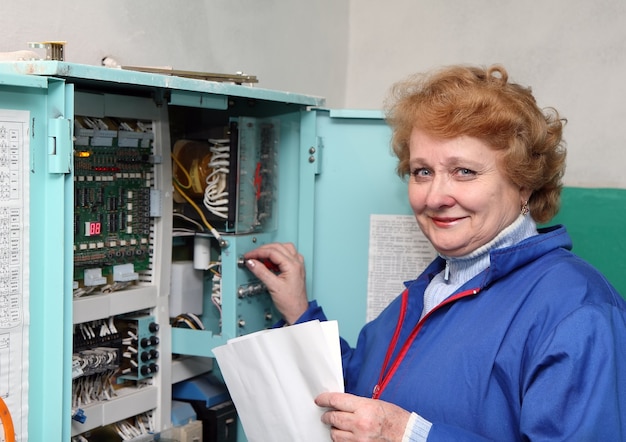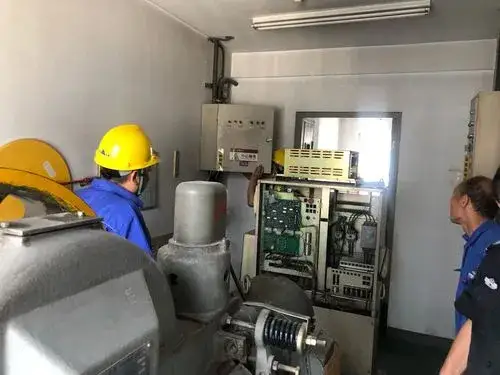Exploring the Comprehensive Procedures Needed for Lift Upkeep
In the realm of building maintenance, making certain the correct performance and security of lifts is extremely important. The intricacy of lift systems calls for a careful method to maintenance. From routine assessments to strategic modernization plans, a holistic view of maintenance is essential. In the ever-evolving landscape of lift modern technology and security criteria, there are extensive actions that should be thoroughly followed to guarantee optimum efficiency and compliance. By dealing with key aspects such as positive maintenance schedules, security checks, and emergency readiness, an extensive understanding of the details entailed in lift maintenance can result in enhanced effectiveness and safety.
Regular Evaluations
When it comes to making certain the longevity and safety and security of your lift system, routine evaluations are extremely important. These regular checks play an important role in identifying any kind of possible issues prior to they intensify right into significant issues, making sure the smooth and risk-free procedure of the lift. By carrying out regular evaluations, maintenance teams can proactively deal with damage, faulty elements, or any other problems that may jeopardize the lift's efficiency or safety and security.
During these evaluations, educated professionals thoroughly examine numerous elements of the lift system, including mechanical components, electric systems, safety and security attributes, and overall architectural integrity (lift and engineering services). They seek signs of wear, rust, leaks, or any kind of anomalies that could indicate a trouble. Furthermore, they verify that all safety mechanisms are functioning correctly and in conformity with guidelines. By spotting and resolving problems at an early stage, these examinations help stop expensive fixings, downtime, or safety and security threats, inevitably extending the lifespan of the lift system and guaranteeing the wellness of its users.
Positive Upkeep Schedules
Implementing proactive upkeep schedules is vital for maximizing the effectiveness and durability of lift systems. By adhering to an aggressive maintenance approach, lift owners can address possible concerns prior to they intensify into significant issues, ultimately reducing downtime and pricey repairs.
A well-structured aggressive upkeep schedule must detail details jobs, frequencies, and liable employees. When producing these schedules to guarantee the lift runs safely and successfully, it is important to comply with supplier referrals and sector requirements. Furthermore, documenting maintenance activities and keeping thorough documents can offer beneficial understandings right into the lift's efficiency in time, aiding in identifying patterns and making informed maintenance decisions.

Safety And Security Compliance Checks
Guaranteeing safety and security conformity through detailed checks is extremely important in preserving lift systems' dependability and protecting customer health. Safety conformity checks include a thorough assessment of various elements, including electrical systems, mechanical components, emergency situation brakes, doors, and other crucial security features. These checks are necessary to determine any possible dangers or breakdowns that could endanger the lift's operation and placed users at threat.
Routine safety and security compliance checks must be performed by certified specialists in adherence to market guidelines and criteria. These checks aid in discovering issues at an early stage, enabling prompt repair best site services and preventive upkeep actions to be executed. Additionally, keeping thorough records of safety and security conformity checks is critical for tracking the lift system's performance with time and demonstrating compliance with safety and security regulations.
Devices Upgrades and Innovation
Enhancing lift systems through tools upgrades and innovation is crucial for enhancing effectiveness and safety and security standards in vertical transport. As technology advances, older lift systems may end up being obsolete, leading to decreased reliability and possible security risks. By spending in tools upgrades and innovation, building proprietors can ensure that their lifts satisfy current industry criteria and laws.

Along with functional benefits, equipment upgrades and modernization tasks can also boost the aesthetics of the lift, providing a much more attractive and modern experience for passengers. Ultimately, spending in lift upgrades and modernization is a positive technique in the direction of making sure the durability, security, and performance of upright transportation systems.
Emergency Readiness Planning
A reliable emergency preparedness plan is important for ensuring the safety and quick feedback in situation of unanticipated cases including lift systems. Emergency preparedness planning for lift systems includes a systematic method to minimize threats, ensure guest safety, and minimize downtime throughout emergency situations.
Secret components of an emergency situation readiness strategy for lifts consist of clear communication procedures, routine training for lift operators on emergency procedures, and routine drills to test the efficiency of the plan. lift engineer. Furthermore, the strategy should detail certain roles and duties for all stakeholders involved, consisting of building monitoring, maintenance employees, and emergency -responders
In the occasion of a lift malfunction or entrapment, having a distinct emergency strategy can assist in working with a timely and efficient feedback to ensure the safety and security and health of guests. Prompt communication, access to emergency devices such as communication tools and emergency situation lights, and expertise of discharge procedures are essential aspects of a thorough emergency situation readiness strategy for lift systems. By prioritizing emergency preparedness preparation, structure supervisors read the full info here can improve the general security and dependability of their lift systems.
Final Thought
Finally, the comprehensive procedures needed for lift maintenance include regular inspections, proactive upkeep routines, security conformity checks, devices upgrades and modernization, and emergency situation preparedness preparation. These procedures are vital for making certain the security, dependability, and performance of lifts in different setups. By executing these actions, lift proprietors can lessen the danger of mishaps, expand the lifespan of their devices, and follow sector policies.

During these inspections, educated experts extensively examine numerous elements of the lift system, consisting of mechanical elements, electrical systems, safety and security features, and total structural honesty.Making certain security conformity via comprehensive checks is critical in preserving lift systems' integrity and protecting individual wellness. Keeping comprehensive documents of security compliance checks is important for tracking the lift system's efficiency over time and demonstrating conformity with safety and security guidelines.
By prioritizing emergency preparedness preparation, structure supervisors can enhance the total security and reliability of their lift systems.